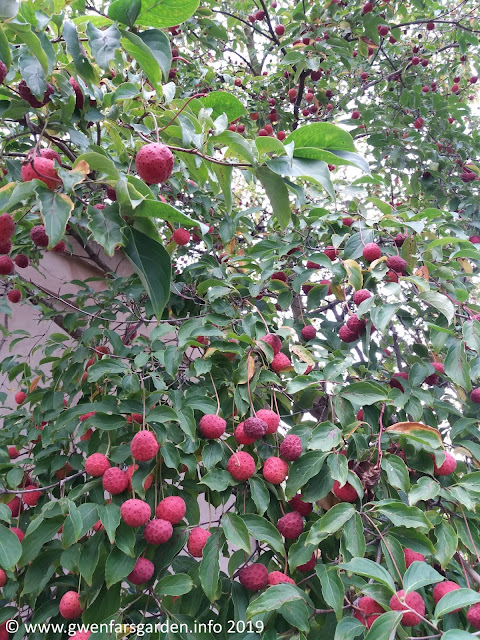Crocus 'Gipsy Girl' with a honey bee, February 2019
The speaker at the recent South Pennines Hardy Plant Society was a beekeeper, Simon Croson, and I picked up some useful info on Honeybees that I thought I’d share.
The Queen and Worker bees are female, and the Drones are male. Queen bees can live up to 5 years, though most live 2-3 years.
In the UK, there are 275 native bees, with a large amount of these
being solitary bees. Of these 275, only 1 (ONE!) is a native bee. There are over
1000 species of native bee the world over, yet only 10 (TEN) species of honey
bee.
So you can see immediately why problems with honeybees can have such a big
impact, with so few species in existence. Overall, other native bees will
pollinate more food than honey bees, yet one in every 3 foods we eat comes from
honey bees. So if there was a large collapse in honey bee colonies, this could still
have a big impact on food availability for humans.
Things have stabilised with the problems with the varroa mite, that hit the news a number of years ago. Partly from use of
chemicals against the mite. However, Simon doesn't use any chemicals and he says there is some evidence that bees are adapting to them, suggesting new generations are building resilience.
But we shouldn't be complacent. There is still a lots of problems with access to food, especially with the climate changing, but plants haven't caught up, and they aren't necessarily flowering when the bees need them. Overall, there is still a decline in the health and population of bees that is worrying.
Honey bees don’t hibernate. They go into a semi-dormant state in the cold months, but if the temperatures rise enough, they will leave the hive and seek out plants for nectar. In Feb 2019, in the UK, we had a week of nearly 25
degrees (usually we are lucky to get to 5 degrees), and honey bees left their hives looking for food.
Honey bee on a Helenium, August 2019
With our changing climate, with warmer wetter winters, this makes planting for winter and early spring food for bees even more important. A post I wrote back in February,
Plants
for pollinators in late Winter, will give you some ideas on plants you might add to your garden to help honey and solitary bees at this time of year.
With honey colour from Simon’s bees: a medium light brown-orange colour is a generalist, made up of nectar from lots of different plants. A quite pale, almost clear, colour honey, is from the nectar from an Alfalfa (Lucerne) crop near some of his hives. A dark brown-orange is made up of nectar from Buckwheat. So different plants will impact differently on the colour the honey ends up.
A couple of small points that I found interesting: pollen is a source of protein for bees, and bees take water into the hive to help regulate it's temperature. A good plant for late Autumn is common Ivy. This is a plant that a lot of people try to remove from their gardens, but try and leave a patch and let it flower, and you'll see bees supping on it's nectar.
It was an interesting talk and it was useful to know that though there is still a lot to worry about, by planting for bees, we really can make a difference, for the bees, and for ourselves.











